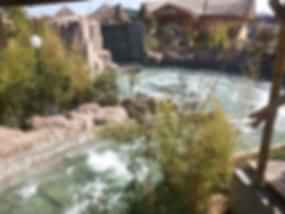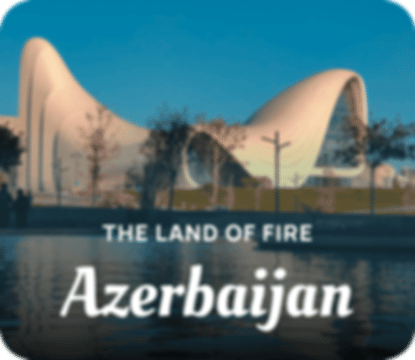Packing for Europe: Spring or Fall
Author
Tavleen Kaur
Date of Publishing
October 14, 2024
Read
5 minutes

Whether you’re in Ireland’s north or Italy’s south, spring is a lovely time to explore Europe. Pleasant weather and less people? Please say yes. Packing for these wonderful months, on the other hand, is definitely a challenge. What if it’s freezing outside at night? What footwear should I bring? Will I have to wear a coat? While it’s always a good idea to be prepared, you don’t want to overpack. To pack the perfect luggage for your Europe packages, use this checklist.
How’s the Weather?
In relation to weather, tourism reaches its peak during Summer, but if you are not planning your trip to Europe during summer then well, you’re soaked. It is a very big continent, which has many stunning and varied countries and vacations can be from a weekend to a year. In fact, always, always, always, you should check the weather forecast of the places you are going to visit before your trip.
Spring in Europe lasts from March through to May, which is the perfect time to travel because the weather is great and there are fewer tourists around. Although the flowers have already started blooming by this time, the climate in some areas of the continent has remained quite cold and wet.
Europe Tour Package @ 48,268
Art Galleries. Marvellous Bridges. Delectable Cuisine. Customizable Itineraries
View Europe Packages
Quick Packing Tips
- Bring a variety of scarves. You may wear the same neutral-colored t-shirt with the same jacket every day, but by mixing and matching scarves, you can create whole unique looks!
- Plan outfits rather than individual parts. Make a list of possible clothes for each day of your vacation before packing your bag. Of course, things are prone to change, but at the very least, you’ll know you’ve packed plenty.
- Check the weather forecast before leaving. Sure, it may vary while you’re there, but at the very least, you’ll have a decent sense of the usual day and night temps.
Packing for Europe in Spring – The Ideal List
The list is centred on a one-week trip, but it may be expanded to any number of days during your spring vacation in Europe during the months of March, April or May!
Clothing & Accessories to Carry

https://images.unsplash.com/photo-1575429885953-bdd542481522?ixid=MnwxMjA3fDB8MHxwaG90by1wYWdlfHx8fGVufDB8fHx8&ixlib=rb-1.2.1&auto=format&fit=crop&w=750&q=80
1. Tops & Bottom Wear
- 4 or 5 T-shirts/tops
- 2 long sleeved shirts
- 2 sweaters or sweatshirts
- 1 cardigan
- 1 or 2 blouses/dress shirts
- 2 pairs of dark washed jeans
- 1 or 2 light weight pants
- Skirts and dresses – for fancy dinners & enhanced style quotient
- Quick dry outfits for your morning workout – for fitness enthusiast
2. Innerwear and Essentials
- 10 pairs of undergarment
- 6 – 7 pairs of socks
- Nightwear/loungewear
3. Outerwear & Shoes
- Raincoat
- Light Jacket
- A pair of comfortable sneakers
- Rain boots if needed
- A pair of dressier shoes/flats
4. Accessories
- Scarves
- Sunglasses
- Contact lenses and spectacles that are used on a regular basis (if used)
- Watches
- Tie (if you’re upto to a fancy dinner!)
- Jewellery
- Purse Wallet (crossbody with zipper preferable)
- Backpack with zipper
Necessary Electronics

https://images.unsplash.com/photo-1536584754829-12214d404f32?ixlib=rb-1.2.1&ixid=MnwxMjA3fDB8MHxwaG90by1wYWdlfHx8fGVufDB8fHx8&auto=format&fit=crop&w=750&q=80
- Phones
- Camera kit
- Tablet/Laptop
- Electric convertor/adapter
- All electronic charges
- Powerbank
- Earphones
Extras to Carry
- Umbrella
- Toilet kit
- Essential Medications
- Passport/IDs
- Make-up/grooming kit
- Chapsticks
- Laundry bag
- Sanitizer/Wipes
- Sealable gallon-sized plastic bags
Wardrobe Tip: Packing for Europe
Do you like Michelin-starred restaurants, street cuisine, or a combination of both? Your packing wardrobe and style will be dictated by this. I would never attempt to dine at a fine restaurant while wearing sneakers or pants. Unless you exclusively plan to dine at informal eateries, bring a nice dress, skirt, or pants for fancier locations. I would suggest bringing at least one more formal attire just in case. You should be fine with good jeans in most restaurants, cafes and bars in Europe, otherwise.
It’s never a bad idea to wear a scarf. It doesn’t have to be a warm scarf; a long, lightweight cotton gauze scarf would suffice. These are useful for a variety of purposes. Of course, you may wrap it around your neck numerous times to be warm, and you can also use it to cover your shoulders if it’s a little chilly but not cold enough for your jacket.
Best shoes for a vacation to Europe in the spring: I strongly advise carrying comfy shoes on every trip to Europe, regardless of the season. Even if the areas you visit do not have many cobblestones, you will most likely be walking and standing a lot. In most European towns, you can get away with wearing stylish sneakers for a day of touring.
A leather jacket (fake or real) or a down shell are the finest jackets for spring in Europe. If you’ll be spending most of your time in southern Europe, you might not need a warm coat and instead pack a cotton or waterproof shell that you can layer with a sweater if necessary.
Happy Packing!!
Now that you’re ready with packing list and good to go ahead with packing for Europe, start planning your vacation in Europe by booking an international tour package at Pickyourtrail. Our travel expert will reach out to you to make it a forever-memorable vacation.
Recommended articles for you
Discover Packages

















